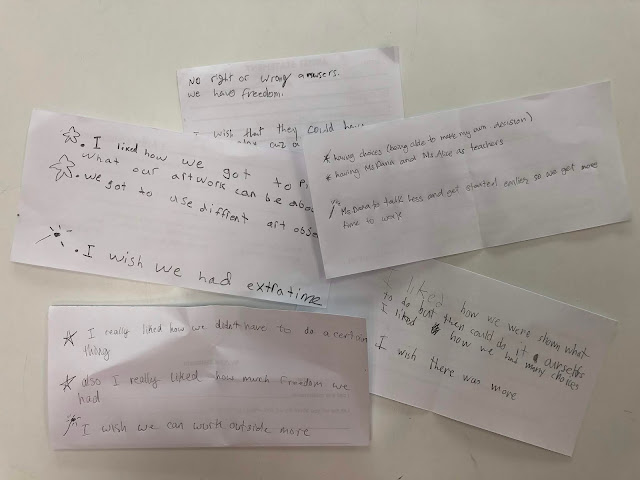The Beginning or the End?

As we get closer and closer to the start of another school year, a little voice begins to chime in to my personal thoughts and planning..."I will do this", "I will not do that". I begin making tiny promises to myself about how I will approach the new school year to make it even more dynamic than the last. After a summer of time spent rejuvenating and clearing my mind, this little voice wakes up to reflect and give some perspective. It tells me what to stop doing and what to start doing in my teaching practice and it won't shut up. So here are a few "beginnings" and "ends" I've settled on to guide my daily practice. Simple changes in thinking, routines or habits that I believe will make a big difference in our art studio this year. For me, this school year will be the end of: Setting meaningless limits on students that stifle their creativity. Making "yes" and "why not" a stronger part of my (and my studen...



